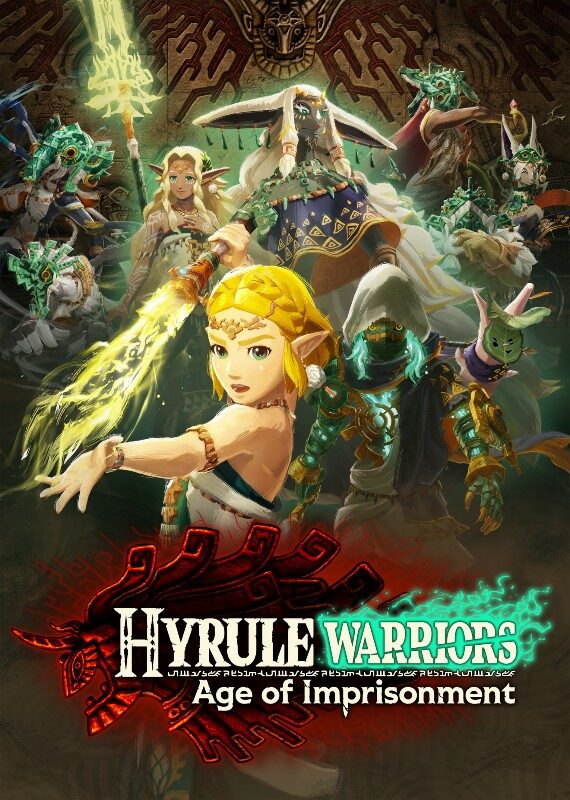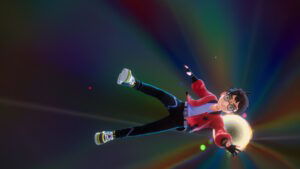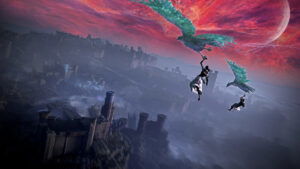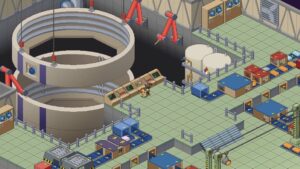How do you follow one of the biggest games of the Nintendo Switch’s massive library? Hyrule Warriors: Age of Imprisonment takes a bold path: going in a completely different direction.
Age of Imprisonment is the third (original) game in the Hyrule Warriors series, an off-shoot of Nintendo’s traditional The Legend of Zelda franchise handled by Koei Tecmo, in the vein of their Dynasty Warriors‘… well, dynasty. Instead of a methodical adventure rife with puzzle-solving, this is 1-versus-1000 arcade warfare and button-mashing adrenaline, with a side of strategy.
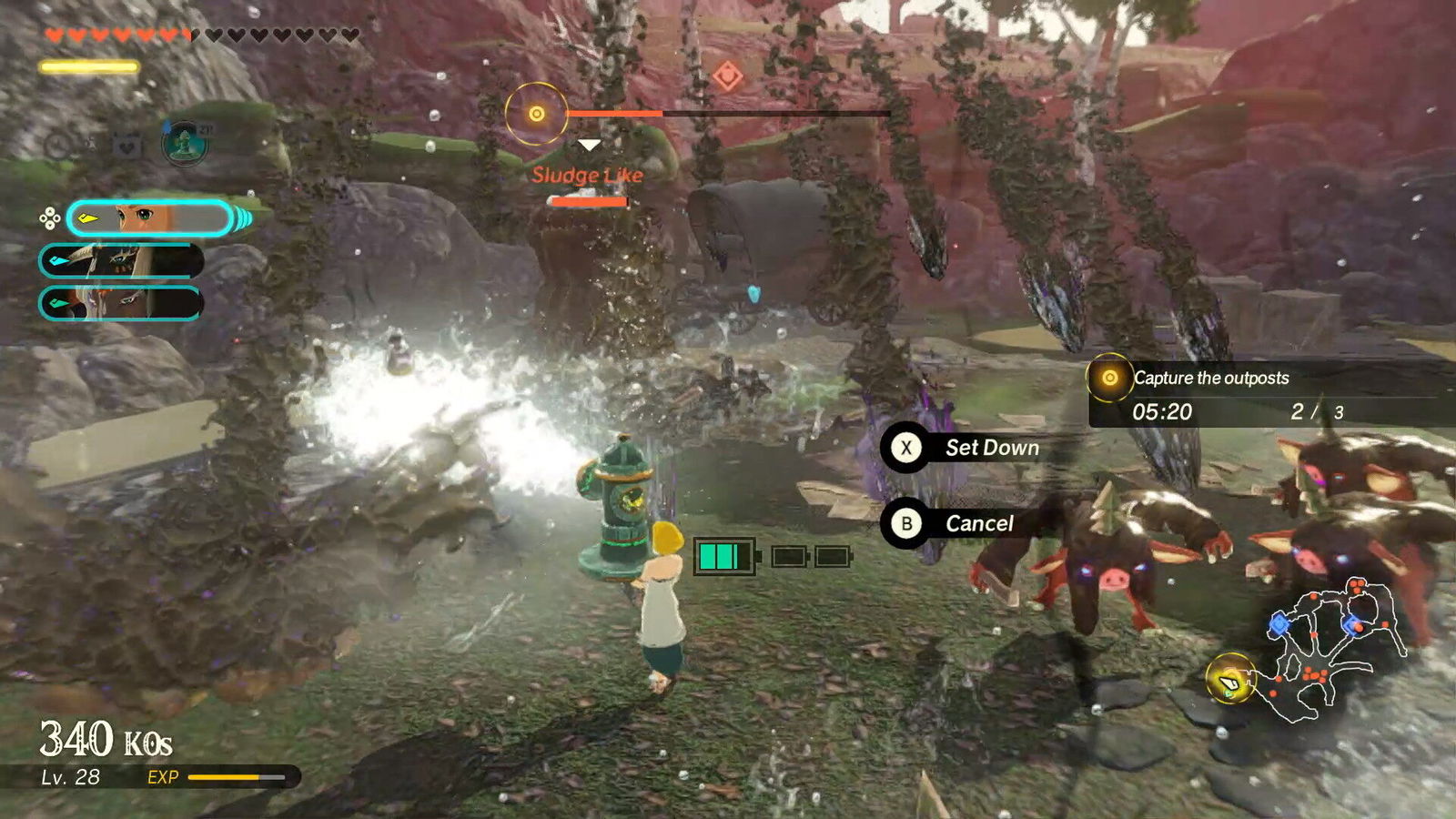
In particular, Age of Imprisonment is a prequel of sorts to The Legend of Zelda: Tears of the Kingdom, just as the last Hyrule Warriors, Age of Calamity, was to Breath of the Wild. The ancient history alluded to in Tears is revealed in Dynasty Warriors fashion but, thankfully, with less canon-warping alternate timeline shenanigans this time.
Narratively, the introduction to The Legend of Zelda: Tears of the Kingdom sees Ganondorf awaken and Princess Zelda mysteriously disappear, only to be teleported to the ancient past to meet her ancestors, King Rauru and Queen Sonia. Age of Imprisonment takes the torch from there and runs with it, showing Zelda’s adventure and the titular conflict that saw Ganondorf sealed away in the first place.
“What’s truly remarkable about Hyrule Warriors: Age of Imprisonment‘s gameplay is how it seamlessly integrates Tears of the Kingdom‘s unique mechanics.”
While keeping everything spoiler-free, I can easily say the story is a fulfilling complement to Tears of the Kingdom in terms of narrative and lore. I bounced off Hyrule Warriors: Age of Calamity in both gameplay and story, despite putting in well over 200 hours chasing 100 per cent in the original Hyrule Warriors on Wii U (and half again on Nintendo Switch). The story of Hyrule’s first king and the original struggle against Ganondorf was almost everything I hoped for.
Along the way, the Hyrulean army picks up assistance from a broad cast of characters representing the various cultures of the Legend of Zelda franchise, and some will already be familiar to Tears veterans. While I personally stayed closest to the main cast, there was an impressive number of distinct personalities and play styles to experience throughout the sprawling campaign mode. Some of the later additions brought quirks that revitalized the familiar control scheme, which is a blessing for a game that can lull you into button-mashing complacency.

What’s truly remarkable about Hyrule Warriors: Age of Imprisonment’s gameplay is how it seamlessly integrates The Legend of Zelda: Tears of the Kingdom’s unique mechanics. The key to the original game’s magic is Link’s skill set — a defined list of tools to apply to whatever objects you encounter in the world. This isn’t a wide-open sandbox where you can experiment with gadgets all day, but those core tenets are carried into the spin-off’s hack-and-slash gameplay through inventive ideas.
For instance, the various Zonai gadgets that could be combined into creative contraptions in Tears of the Kingdom are available to combatants in Age of Imprisonment. Each character can assign different gadgets to shortcuts, and using them draws energy from the party’s collective batteries. These can trigger elemental weaknesses or even add new layers of strategy to combat. The first time I pulled out a Shock Emitter to stun an enemy standing too close to water, set the device down to keep the monster trapped, then flanked it myself to continue the assault, I felt the same glimmer of experimentation that made Tears of the Kingdom so fascinating.
While the combinations and possibilities aren’t as vast as in the original game, experimenting with the devices is still a blast — and an essential part of combat. Devices share assignable shortcut slots with characters’ unique abilities, which can counter enemy attacks (such as negating a charge attack by striking with an impaling move).
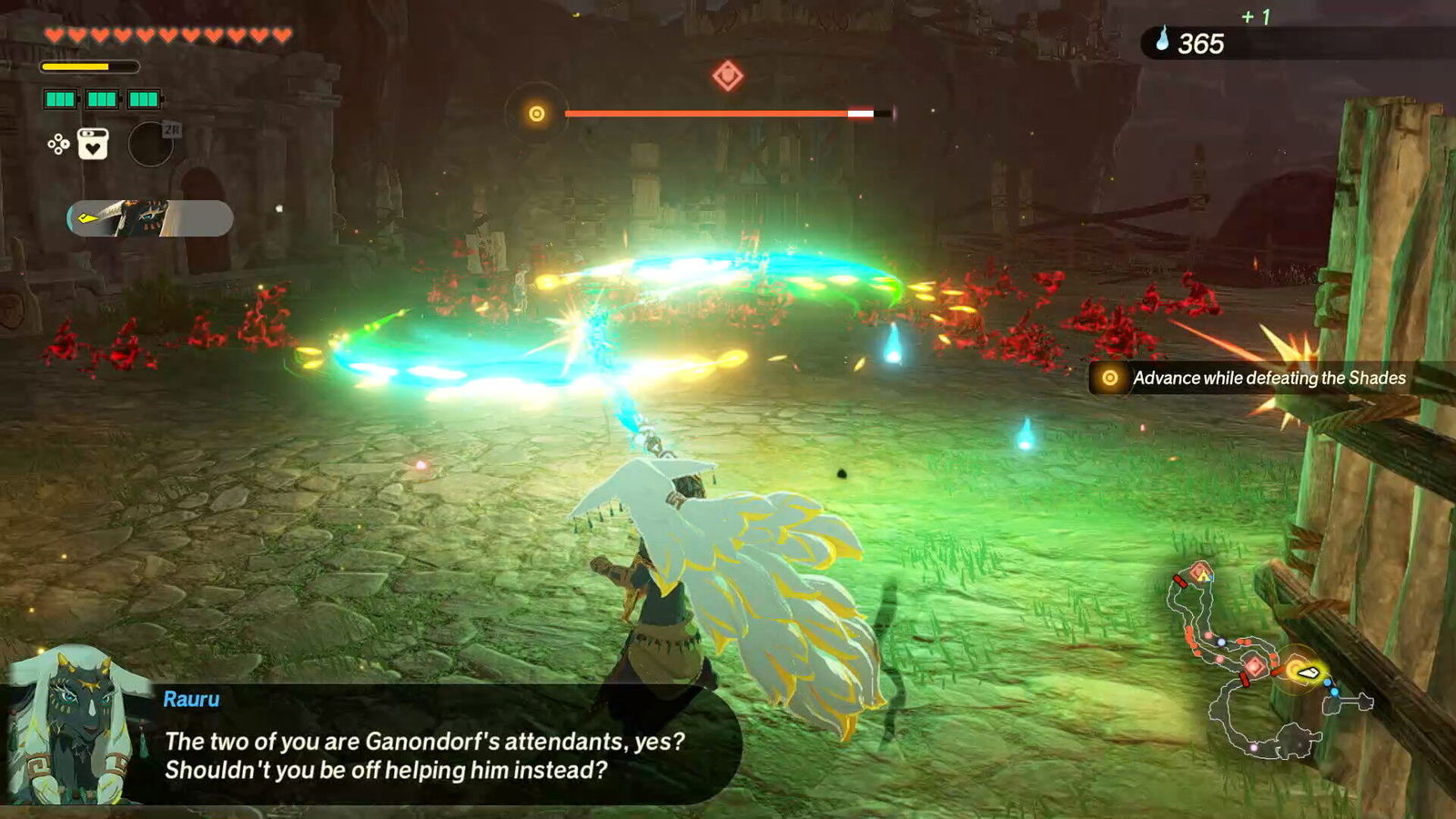
There’s a level of rock-paper-scissors strategy running through Hyrule Warriors: Age of Imprisonment, but ultimately everything revolves around depleting big opponents’ stun gauges. Counter attacks with the appropriate ability, dodge big moves and counter attack, charge your special meter and unleash it to reveal the meter immediately… at its core, you’re looking to make those little white pie gauges appear, then deplete them with rapid attacks. While it can sound a little simplistic on paper, in practice, it’s a fun set of gameplay loops, and whaling on an army singlehandedly still scratches a certain itch.
Characters’ unique abilities keep it fresh, as you’re bounced around the roster for certain stages. Then there are Sync Strikes, where two allies who have been fighting in the same vicinity long enough can activate a tag team attack. Depending on the units involved, these attacks can vary wildly, as they rely on combining the participants’ unique skillsets—some will require you to aim beams of light with both thumbsticks, others will give you a brief window to choose elemental attacks, and some others mash up the inputs used in the characters’ usual abilities.
These help Age of Imprisonment walk the line between the tragic irony of knowing how the story ends and the slightly more irreverent tone found in the original Hyrule Warriors, all in a way that remains authentic to the source material. We may know what awaits at the end of the war, but it’s also dope to see Mineru summon a large mech suit and have Zelda direct it, or to watch a Korok play musketeer and lob elemental fruits at big bads.
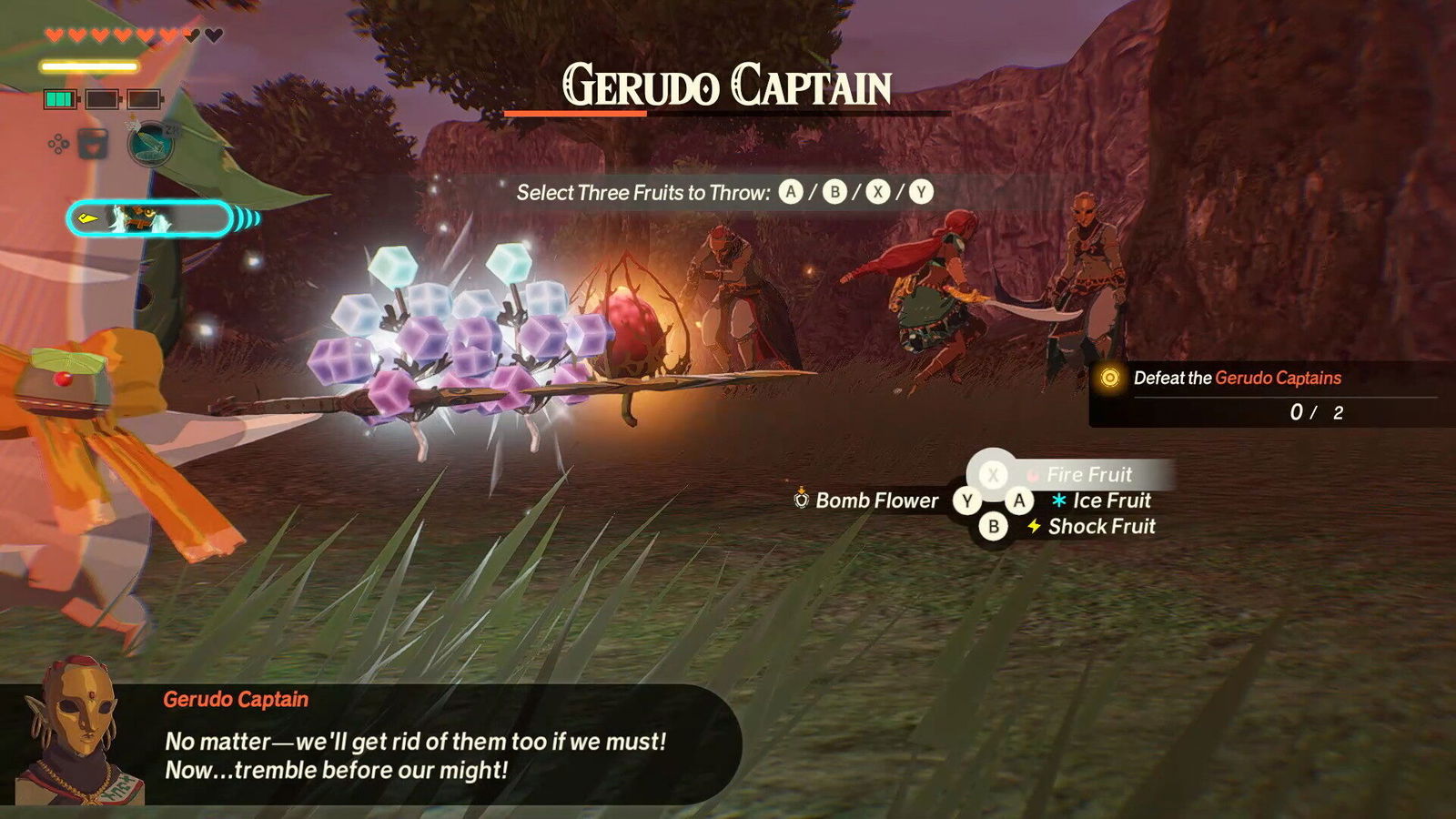
To its credit, Age of Imprisonment has refined the pacing of Hyrule Warriors‘ format considerably. As much as I love the original, stages in previous games could get massive, grindy, and dragged out, especially if a mistake or an incompetent computer ally undid a bunch of your progress. This time around, side missions are offered in much more digestible chunks, about a third the size of most main missions.
Now, I did encounter much less strategic tomfoolery from my allies, compared to the original Hyrule Warriors or even Nintendo’s other musou spin-off, Fire Emblem Warriors. In the past, computer-controlled allies had a penchant for doing their jobs so poorly that they risked being eliminated, especially on stages where their survival was mission-critical. So you’d peel off from a fight, cross half the map, bail out a faceless captain, then run back to pick up where you left off.
On normal difficulty, my allies in Hyrule Warriors: Age of Imprisonment rarely needed a hand. I’m not complaining about having fewer of those make-work moments, but it was unusual all the same. Such moments were a nuisance in earlier games that, at least, added a sense of gravity to missions. While the genre isn’t typically heavy on strategy, if it’s going to dress up and play “war,” it could lend itself to a bit more strategic thought.
By the same token, after the mechanic was introduced in a tutorial, I never had to direct my allies through the menu again — everything just flowed smoothly on its own. Between being experienced with these games and completing most of the side stages between main story beats, I wouldn’t say the normal difficulty posed much of a challenge; I never felt my back was truly against the wall, aside from the last few story stages where I was slightly underlevelled.

Otherwise, Hyrule Warriors: Age of Imprisonment had me hooked for its entire 30-hour+ quest, always torn between wanting to see what happened next in the story and seeking out the components to unlock new features for the characters. In a way, it felt as though they took the miscellaneous stages from the original game’s Adventure Maps and grafted them onto the campaign, blending the two sides; there’s a genuine need to mess around with the side quests between stages, to maintain your levels and gear, but there’s a solid cadence to how it all flows.
Though everything came to a satisfying conclusion, I can see the potential for future downloadable content if Nintendo and Koei Tecmo decide to go that route again. I’d enjoy the chance to unlock additional weapons or outfits, or explore new maps reminiscent of the Adventure Maps from the original Hyrule Warriors. For now, I’m quite satisfied with this history lesson on ancient Hyrule.

